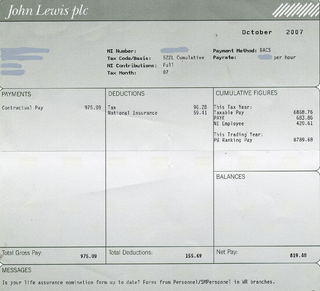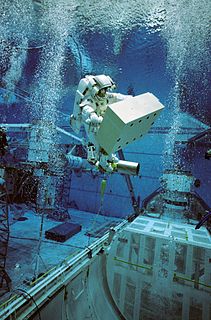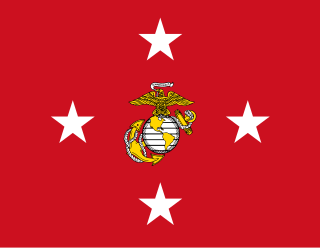
The Republic of Korea Armed Forces, also known as the ROK Armed Forces, are the armed forces of South Korea. The ROK Armed Forces is one of the largest standing armed forces in the world with a reported personnel strength of 3,699,000 in 2018. South Korea has one of the highest defense budgets in the world, ranking 10th globally in 2019, with a budget of more than $43 billion U.S. dollars. The South Korean military is ranked as the 7th most powerful military force in the world as of 2019.
The United States Armed Forces are the military forces of the United States of America. It consists of the Army, Marine Corps, Navy, Air Force, and Coast Guard. The president of the United States is the commander-in-chief of the Armed Forces and forms military policy with the Department of Defense (DoD) and Department of Homeland Security (DHS), both federal executive departments, acting as the principal organs by which military policy is carried out. All five armed services are among the seven uniformed services of the United States.

The IBM Series/1 is a 16-bit minicomputer, introduced in 1976, that in many respects competed with other minicomputers of the time, such as the PDP-11 from Digital Equipment Corporation and similar offerings from Data General and HP. The Series/1 was typically used to control and operate external electro-mechanical components while also allowing for primitive data storage and handling.
In the United States Navy, officers have various ranks. Equivalency between services is by pay grade. United States Navy commissioned officer ranks have two distinct sets of rank insignia: On dress uniform a series of stripes similar to Commonwealth naval ranks are worn; on service khaki, working uniforms, and special uniform situations, the rank insignia are similar to the equivalent rank in the US Army or US Air Force.
A United States military occupation code, or a military occupational specialty code, is a nine-character code used in the United States Army and United States Marine Corps to identify a specific job. In the United States Air Force, a system of Air Force Specialty Codes (AFSC) is used. In the United States Navy, a system of naval ratings and designators are used along with the Navy Enlisted Classification (NEC) system. A system of ratings are also used in the United States Coast Guard.

Carol A. Mutter is a former United States Marine Corps lieutenant general. She is the first woman in the history of the U.S. Armed Forces to be appointed to a three-star grade. She retired from the Marine Corps on January 1, 1999. Her last active duty assignment was as Deputy Chief of Staff, Manpower and Reserve Affairs at Marine Corps Headquarters in Washington, D.C.
Integrated logistic support (ILS) is an integrated and iterative process for developing materiel and a support strategy that optimizes functional support, leverages existing resources, and guides the system engineering process to quantify and lower life cycle cost and decrease the logistics footprint, making the system easier to support. Although originally developed for military purposes, it is also widely used in commercial product support or customer service organisations.
The Military Personnel Records Center (NPRC-MPR) is a branch of the National Personnel Records Center and is the repository of over 56 million military personnel records and medical records pertaining to retired, discharged, and deceased veterans of the U.S. armed forces.
The Officer Qualification Record (OQR), NAVMC 123a, is one of the best sources of information concerning US Marine officers. It is similar to the enlisted Service Record Book (SRB) with only minor differences. This "record presents a cumulative and concise summary of basic events in the officer's career from the time of acceptance of appointment to separation. The OQR also serves as the basis for reporting information into the Marine Corps Total Force System and provides commanders with background information to assist them in officer personnel planning and assignment."
Air Reserve Technicians, commonly referred to as ARTs, are a nucleus of full-time uniformed U.S. Air Force leaders, managers, operators, planners and trainers in what is known as the Air Reserve Component (ARC) of the United States Air Force, the ARC consisting of both the Air Force Reserve and the Air National Guard.

Marine Corps Systems Command (MCSC) is the acquisition command of the United States Marine Corps, made up of Marines, sailors, civilians and contractors. As the only systems command in the Marine Corps, MCSC serves as Head of Contracting Authority and exercises technical authority for all Marine Corps ground weapon and information technology programs. MCSC is headquartered at Marine Corps Base Quantico.
The Defense Integrated Military Human Resources System was an enterprise program of the Business Transformation Agency's Defense Business Systems Acquisition Executive, within the United States Department of Defense (DoD). As the largest enterprise resource planning program ever implemented for human resources, DIMHRS was to subsume or replace over 90 legacy systems. The first phase of DIMHRS was expected to roll out first to the U.S. Army in 2009 and bring all payroll and personnel functions for the Army into one integrated web-based system. The U.S. Air Force, United States Navy and the Marines were expected to roll out in that order after the Army had implemented it. On January 16, 2009, the Deputy Secretary of Defense issued a memorandum directing the MILDEPS and the Defense Finance Accounting Service (DFAS), to confirm the "core" enterprise requirements of the capability at that time. Once, confirmed, the BTA was to transition the solution to the individual MILDEPS to build out and deploy their own required personnel and pay solutions using the "core" to the maximum extent possible..(Memorandum, Deputy Secretary of Defense, January 16, 2009, Subject: Acquisition Decision Memorandum for the Defense Integrated Military Human Resources System). The solution was transitioned to the MILDEPS on September 30, 2009. After numerous delays, technical problems, and other issues, in February 2010, the DoD completed the transition of the program, after 11 years and $850 million.
The structure of the United States Navy consists of four main bodies: the Office of the Secretary of the Navy, the Office of the Chief of Naval Operations, the operating forces, and the Shore Establishment.
The Unit Deployment Program (UDP) is a system for assigning deployments of the United States Marine Corps. To reduce the number of unaccompanied tours and improve unit continuity, the Commandant of the Marine Corps, (CMC) established it to provide for the deployment of units to the Western Pacific (WESTPAC) for periods of approximately six months. The initial program was a six-phased evolution that sequenced infantry battalions and aircraft squadrons/detachments into WESTPAC deployments, thus eliminating the 12-month permanent change of station assignments for personnel assigned to these units. The program commenced in October 1977 and has proceeded through the six phases. In August 1985, tank companies began phasing into the program but following Southwest Asia, were discontinued. In Fiscal Year 1987 (FY87) and FY88, Amphibious Assault Vehicle (AAV) companies and direct support artillery batteries were phased in and later, Light Armored Reconnaissance (LAR) companies were also included in the program. The Marine Corps’ objective is to adhere as closely as possible to a six-month period of deployment away from a unit's Continental United States (CONUS) home base. In the case of Hawaii-based infantry battalions, which employ a three-battalion rotation base, a seven-month period of deployment is executed to support the Unit Cohesion Program and efficient staffing of first term Marines. It must be understood, however, that shipping or airlift schedule variations, and exercise or contingency operations will occasionally necessitate longer or shorter deployments for participating units. It is imperative that all personnel involved in these deployments be kept fully informed of planned deployment duration and subsequent deployment schedule changes.

The Marine Corps Mobilization Command (MOBCOM) is a major subordinate command (MSC) of Marine Forces Reserve and provides support for all Individual Ready Reserve (IRR), Individual Mobilization Augmentee (IMA) and Mobilized Training Unit Marine reservists. It falls under the Force Headquarters Group.

The Naval Supply Systems Command (NAVSUP) is a command of the United States Navy.

The Assistant Secretary of the Navy is a civilian office in the United States Department of the Navy. The Assistant Secretary of the Navy reports to the Under Secretary of the Navy who in turn reports to the United States Secretary of the Navy.
The reserve components of the United States Armed Forces are military organizations whose members generally perform a minimum of 39 days of military duty per year and who augment the active duty military when necessary. The reserve components are also referred to collectively as the National Guard and Reserve.













